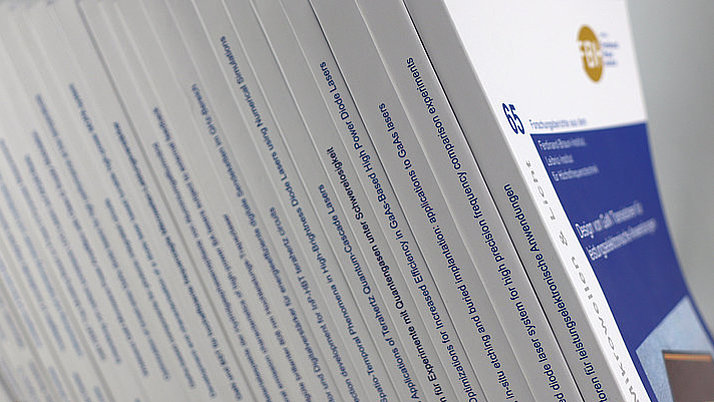A Monolithically Integrated InP HBT-based THz Detector
A. Rämer#, E. Negri#$, H. Yacoub#, J. Theumer#*, J. Wartena#, V. Krozer#^, W. Heinrich#
Published in:
Proc. 54th European Microwave Conference (EuMC 2024), Paris, France, Sep. 24-26, ISBN: 978-2-87487-077-4, pp. 1000-1003 (2024).
Abstract:
THz power detection beyond 100 GHz still faces challenges in sensitivity, speed, and the capability of detector arrays. This paper introduces the first measurement outcomes of InP heterojunction bipolar transistor (HBT) THz detectors featuring monolithically integrated antenna structures. These detectors exhibit high sensitivity, rapid response times, and scalability for large arrays, leveraging self-mixing effects. Achieving high sensitivity necessitates tailored adaptation of InP HBT devices to broadband on-chip antennas. Sensitivities surpassing 100 mA/W are attained between 100 GHz and 500 GHz, with values exceeding 300 mA/W for frequencies below 200 GHz. Notably, lens and substrate losses are not factored into this sensitivity. Expectations are high for sensitivity values to surpass those achieved with FETs in the same frequency range, further establishing the superiority of this approach in THz power detection.
# Ferdinand-Braun-Institut (FBH), Germany
$ Sapienza University of Rome, Italy
* School of Electrical and Computer Engineering, Georgia Institute of Technology, USA
^ Physikalisches Institut, Goethe-Universität Frankfurt am Main, Germany
Keywords:
THz detector, on-chip antenna, InP HBT.
Copyright © 2024 EuMA. All rights reserved. Personal use of this material is permitted. However, permission to reprint/republish this material for advertising or promotional purposes or for creating new collective works for resale or redistribution to servers or lists, or to reuse any copyrighted component of this work in other works must be obtained from the EuMA.
Full version in pdf-format.


